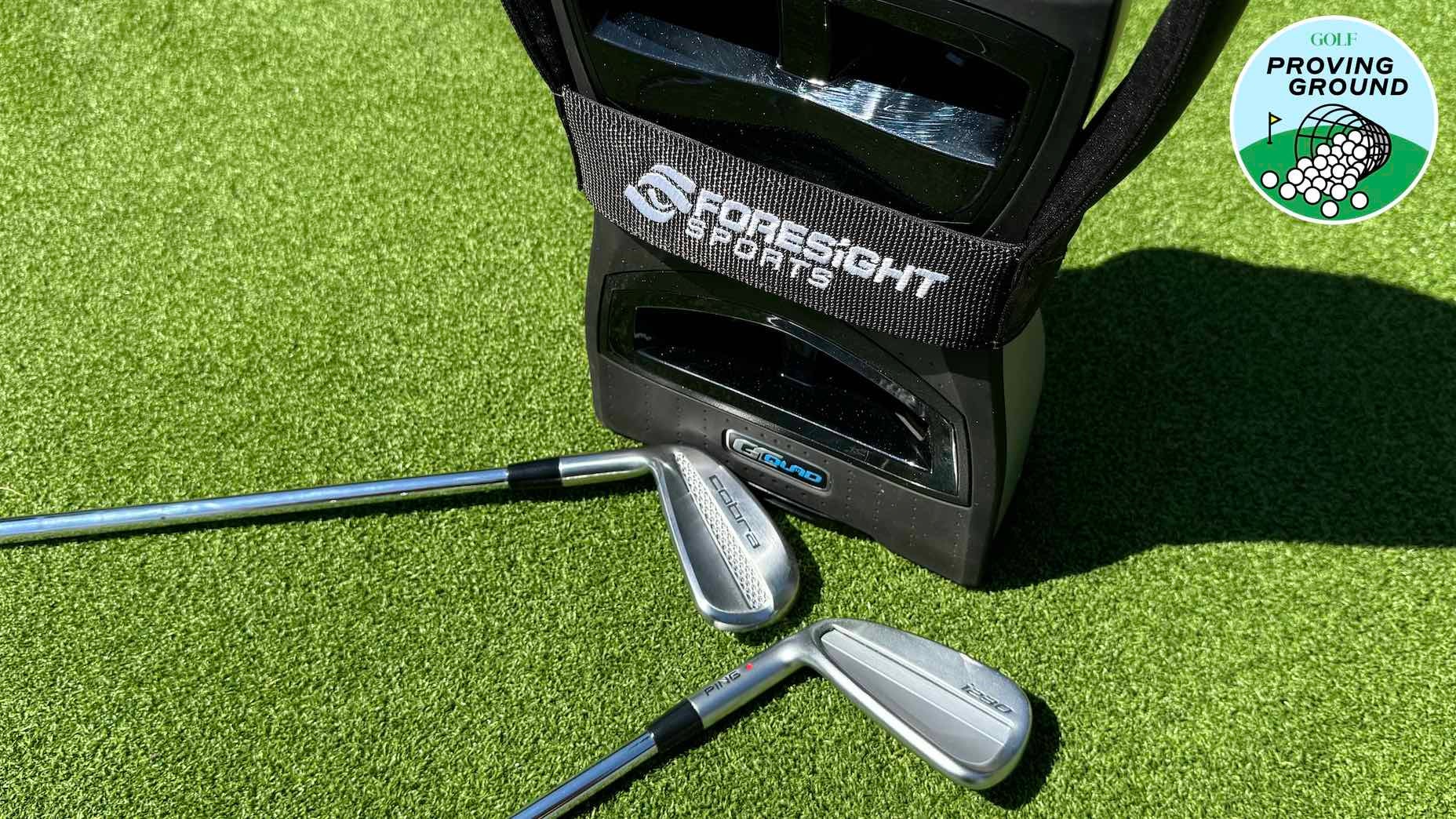Cobra Darkspeed drivers excel in 4 areas, according to robot testing

Cobra's Darkspeed Max driver exceeded expectations during robotic testing.
Jonathan Wall/GOLF
For the 2024 edition of GOLF’s ClubTest, we once again teamed up with Golf Laboratories for robotic driver testing. With the help of their swing robot, we’re able to get a better picture of how each driver performs at the same speed (95 mph), delivery and attack angle in a 9-point face mapping test. The end result is an unbiased (and extremely detailed) look at where each driver model excels.
We’re kicking things off with robotic insights on Cobra’s all-new Darkspeed drivers. Pick up all your new Cobra gear at Fairway Jockey.
MORE FROM OUR 2024 CLUBTEST COVERAGE: Cobra Darkspeed drivers: Everything you need to know | Cobra Darkspeed fairway woods: Everything you need to know | Cobra Darkspeed hybrids and irons: Everything you need to know | How Cobra Darkspeed helped a 14-handicap embrace the 3-wood | Cobra’s Darkspeed is a ‘unicorn’ driver in 1 important area
***
Back to the top
With four years of robotic testing data at our fingertips, we’re able to better highlight specific performance improvements across models. Looking at recent data, it’s fair to say Aerojet regressed to the mean last year, which isn’t a huge surprise considering the incredible numbers LTDx produced. Besting one of the top-performing driver lineups we’ve ever tested was always going to be a tall task.
But there’s reason to believe Darkspeed is up to the task of getting back to LTDx status.
Looking strictly at the 10.5-degree LTDx heads we tested in 2022 — GOLF started testing all lofts/models this year — the standard, LS and Max models produced an astounding 5-yard carry distance delta average across the three models, including 3.4 yards for the LTDx Max. That means across all eight mishit locations, golfers could expect to see, on average, just 5 yards of distance loss across the entire face at 95 mph.
Darkspeed produced a very similar number to LTDx across all three models (Max, X and LS) with a carry distance delta of just 6.5 yards on mishits, making them great options to test for golfers with inconsistent contact.
To put Darkspeed’s carry distance delta into perspective, Aerojet was at 13.1 yards. It’s a massive improvement in one year.
Take it to the Max

The 9- and 10.5-degree Darkspeed Max earned high marks for forgiveness at 95 mph. With carry distance deltas — we take the carry distance for a center strike and compare it to the other eight mishit locations — hovering around 7 yards, it’s possible a golfer could see little to no distance loss, regardless of impact location.
In particular, a 1/2-inch high center strike on the 9-degree Max head was 1-yard longer than a center strike. And for golfers who routinely find the high toe, 1/2-inch high 3/4-inch toe impacts with the same 9-degree Max lost only 0.3 yards.
It essentially means you could see little to no distance loss on one of the most common mishit locations with the same 9-degree Max.
Toe to go

Speaking of high-toe misses, Darkspeed generated one of the best high-toe distance loss deltas across all lofts and models in the lineup at just 6.4 yards (95 mph). It speaks to the impressive stability Darkspeed provides — even in the LS model, where forgiveness usually has to be sacrificed for speed.
And if you’re wondering how the 6.4 number stacks up to the rest of the pack, some brands ended up with high-toe carry delta averages around 13 yards (across all lofts and models) on the same impact location.
If the goal behind robotic testing data is to highlight clubs worth testing to combat a specific miss, then it’s safe to say Darkspeed is a worthy option for high-toe impact.
What’s inside that counts

The overall head construction of Darkspeed is eerily similar to Aerojet, so it shouldn’t come as a surprise that the two models produced eerily similar launch and spin packages: 11.4 degrees and 2,970 RPMs (Darkspeed) versus 11.8 degrees and 2,977 RPMs (Aerojet).
The numbers further highlight the internal changes Cobra made to improve overall stability and ball speed retention. And speaking of ball speed, the delta between the two models was a little over 0.5 mph.
So how does overall carry improve if the launch, spin and ball speed numbers are so similar? It comes down to noticeably tighter launch and spin rates on mishits. Find a way to make those numbers closer to what a golfer might see on a good strike, and you’re bound to have a winning product.
Want to overhaul your bag for 2024? Find a fitting location near you at GOLF’s affiliate company True Spec Golf.











